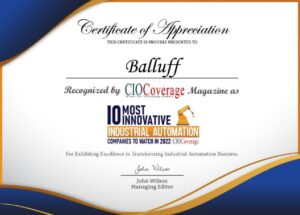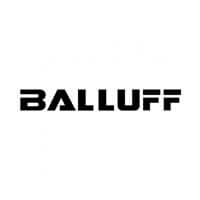 Digitalization and the Industrial Internet of Things (IIoT) are influencing the future of sensor technology. At the same time, they are also changing customer expectations. Balluff is responding with new ways of working and thinking.
Digitalization and the Industrial Internet of Things (IIoT) are influencing the future of sensor technology. At the same time, they are also changing customer expectations. Balluff is responding with new ways of working and thinking.
Sensors – smaller, faster, more versatile
The future of sensor technology is occupying the automation industry. While discussions around hardware and software, safety sensor technology and artificial intelligence are increasing, the requirements and expectations for plants, machines and their sensors are also rising. A decisive key trend here is digitalization. For Balluff, a global sensor and automation specialist, it is the next level of industrial automation. This also applies to the Industrial Internet of Things (IIoT), which combines classic operational technology (OT) and information technology (IT). Intelligent sensors that collect data, evaluate it, and generate useful information from it make this possible.
“The rapidly increasing availability of data makes decisions easier,” says Dr. Ingo Kleinschroth, head of product development at Balluff, “We not only analyze data retrospectively, but also use it predictively.” The result? “More facts instead of intuition.”
Component and solution provider
Whether it be intelligent sensors with the IO-Link communication standard, the multifunctional Balluff condition monitoring sensor for smart condition monitoring, or RFID and network modules for improved communication between the field level and IT: Balluff’s portfolio of smart devices is growing steadily along with the diversity of technology. However, digitalization not only influences the product range of an automation specialist like Balluff, but also the self-image of the entire group.
“We see ourselves as a component and solution provider, and both aspects have their importance,” says Kleinschroth. “Based on customer requirements, we offer a solution topology that extends from components to evaluation in IT systems – from data source to data analytics.”
He explains that what is most important is the ease of scalability and the extensibility of solutions while maintaining IT security requirements and comprehensive understanding of end-to-end processes. “With a view to digitalization, these are the decisive success factors.”
And the customer? According to Kleinschroth, their expectations are also being changed by increasing digitalization. “Compared to the past, digital customer management is starting much earlier – as early as the consulting and conception phase. The entire digital customer journey is getting longer.” Examples of change include digital handling and service processes, remote support for analysis and maintenance, and the expansion of sensor functionality via software updates.
“What our customers need is measurable added value in their production environment that can be implemented with little effort,” says Kleinschroth. “This can only succeed if we offer them 360-degree digitization and IIoT solutions that are as tailored as they are smart.”
Meeting the needs of the customer to help them improve their competitive position is the more important goal for Balluff. This means finding the best solution for their applications, not always the biggest or most complex.
“Our strategy is to focus on all parts of the manufacturing community, not just selling our components. We care for the plants, the headquarters, the machine builders, and the integrators of our customers,” says Will Healy III, Regional Marketing Manager of Balluff Inc.
Acceptance of innovation
In addition to data quality, openness and agility are also becoming increasingly important in the context of digitalization. Hubertus Breier, head of technology at Balluff, is also aware of this.

“We see further development as an opportunity and so we continue to adapt our thinking and processes within the company.”
It isn’t only the development and innovation department, but all Balluff team members who critically listen to customer pain points and consider innovative solutions — even if those solutions aren’t yet part of the Balluff portfolio.
The declared goal is to get employees excited about innovations, to motivate them, and thus to drive forward the digital transformation in the group. New ideas and early plans are shared quickly with customers for feedback and inclusion.
“Customers need transparency, which is why we attach great importance to involving them in our incubation programs at a very early stage, for example with functional prototypes or software solutions,” said Breier.
These strong partnerships and a commitment to delivering high quality, reliable, innovative solutions are the foundations of long-term success and what has guided Balluff for its 100 years in business.






